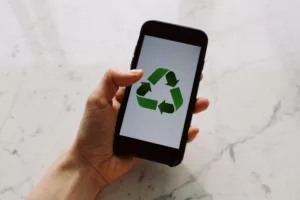Sustainability or Illusion?

In a world increasingly concerned about environmental issues and sustainability, the beauty industry has caught onto the trend, presenting products with labels like “eco-friendly,” “natural,” and “organic.” While this may seem like a step in the right direction, the reality often falls short of the promises made on the packaging. Welcome to the world of greenwashing, where appearances can be deceiving, and the truth about beauty products might be hidden beneath a layer of marketing gloss.
Greenwashing refers to the practice of making misleading or exaggerated claims about the environmental benefits of a product, service, or company. In the context of the beauty industry, greenwashing involves creating the illusion that a product is more environmentally friendly, natural, or sustainable than it actually is. It’s a way for companies to capitalize on the growing consumer demand for eco-conscious products without necessarily making substantial changes to their practices.
The Art of Deceptive Marketing
When you stroll down the beauty aisle, you’ll likely encounter an array of products adorned with earthy tones, leaf motifs, and phrases like “100% natural” or “chemical-free.” These labels evoke a sense of trust and assurance, making consumers believe they’re making a responsible choice for their skin and the planet. However, it’s crucial to remember that not everything that glitters is green.
One common strategy employed by greenwashing is vague or ambiguous language. Terms like “natural” and “organic” lack standardized definitions in the beauty industry, allowing companies to interpret them as they see fit. Just because a product contains a few natural ingredients doesn’t mean it’s entirely free from synthetic or harmful components. Always take the time to read the ingredient list on the back of the product, and if you’re unsure about an ingredient, do your research.
The Illusion of Eco-Friendly Packaging
Another facet of greenwashing is the emphasis on eco-friendly packaging. Products may come in recycled cardboard boxes or glass bottles, giving the impression that the brand is committed to reducing its carbon footprint. While sustainable packaging is undoubtedly a positive step, it’s essential to look beyond the exterior. Consider the entire lifecycle of the product, including its ingredients, production methods, and transportation impact.
To appear more aligned with environmentally conscious consumers, some brands include a token “green” ingredient in their products. This ingredient is highlighted on the packaging to draw attention away from the rest of the formula, which might still contain synthetic chemicals that aren’t as skin-friendly as they claim to be. Don’t be swayed by a single impressive ingredient; evaluate the entire composition of the product.

Spotting Genuine Sustainability
Amidst the sea of greenwashing, there are genuinely sustainable and ethical beauty brands that deserve recognition. These brands are committed to transparency, provide detailed information about their sourcing and production practices, and adhere to third-party certifications that validate their claims. Look for certifications like “Cruelty-Free,” “Certified Organic,” and “Fair Trade” from reputable organizations to ensure you’re making an informed choice.
As consumers, we hold the power to influence the beauty industry’s practices. By educating ourselves about greenwashing tactics and demanding transparency, we can drive change. Here are a few steps to consider:
- Research: Don’t rely solely on marketing claims. Look up reviews, check ingredient lists, and investigate the brand’s overall reputation.
- Support Genuine Brands: Seek out brands that have a proven track record of sustainability and ethical practices. Supporting these companies encourages others to follow suit.
- Spread Awareness: Share your knowledge with friends and family. The more informed consumers there are, the harder it becomes for companies to deceive with greenwashing tactics.
- Ask Questions: Reach out to brands directly and ask about their sustainability efforts. Genuine brands will be more than happy to share their initiatives.
- Advocate for Change: Support initiatives that call for more rigorous regulations on greenwashing. The clearer the guidelines, the less room companies have to manipulate their claims.
Greenwashing in the beauty industry is a stark reminder that not everything labeled “green” is as environmentally friendly as it appears. The deceptive marketing tactics employed by some brands can lead us astray from making genuinely sustainable choices. As conscious consumers, it’s our responsibility to see beyond the surface and demand transparency, authenticity, and real change. By doing so, we can encourage the beauty industry to evolve towards practices that truly prioritize our well-being and the health of our planet.

